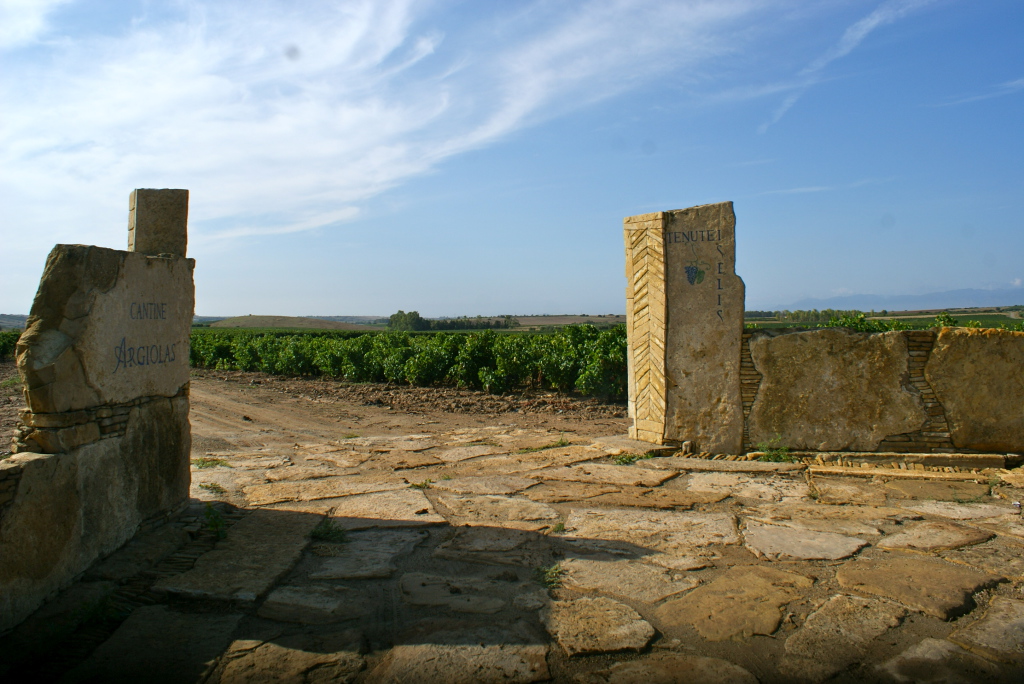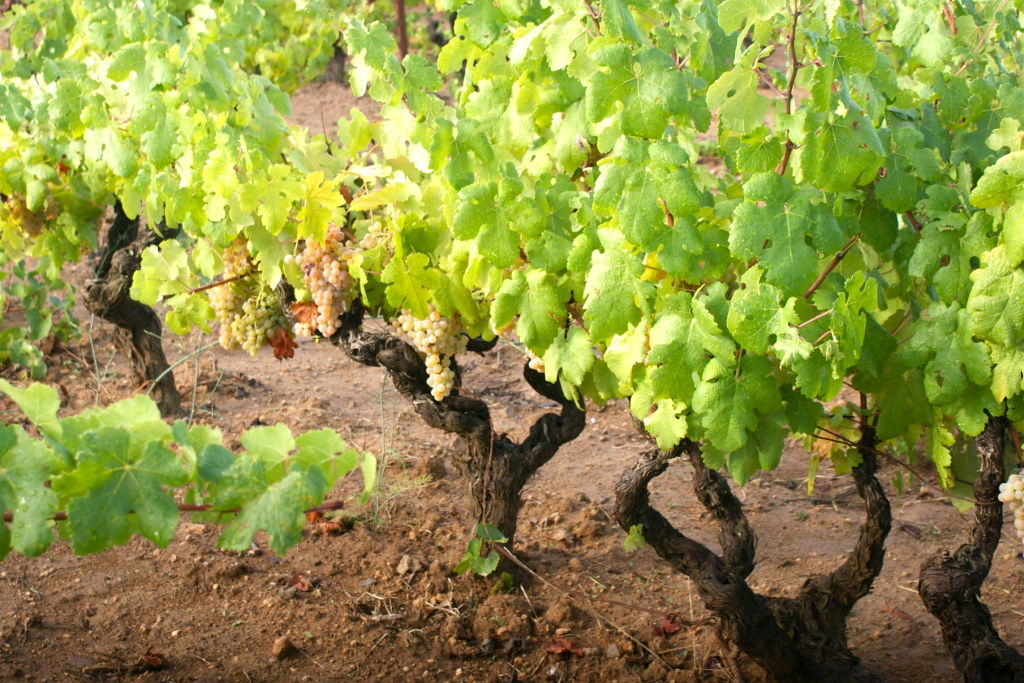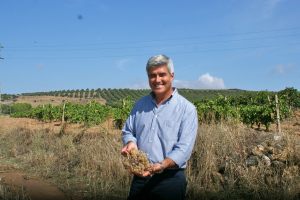 Antonio Argiolas, who was born in 1906 and was present in the life of his company until his death, in 2009, since the postwar years believed that typical products were the main richness of Sardinia and began to invest in production and trade of wine, oil, and cheese. From being a trader, he became little by little a producer, investing in vineyards, buying the plots of land that in those years the small producers were either uprooting or leaving, and building his winery, oil press, and dairy in the centre of Serdiana, at a few kilometres from Cagliari.
Antonio Argiolas, who was born in 1906 and was present in the life of his company until his death, in 2009, since the postwar years believed that typical products were the main richness of Sardinia and began to invest in production and trade of wine, oil, and cheese. From being a trader, he became little by little a producer, investing in vineyards, buying the plots of land that in those years the small producers were either uprooting or leaving, and building his winery, oil press, and dairy in the centre of Serdiana, at a few kilometres from Cagliari.
Aiming at quality
At that time, Sardinian wine had not a market among quality wines yet, lacked a qualifying identity, and was mainly sold loos after its fermentation. Then, in the Eighties, when the market of loose wine was going trough a very difficult period and Franco e Giuseppe, Antonio’s sons and present owners, entered the company, an important decision was taken: attention to quality, production of wines with their own trademark, aiming at local qualities. And, in order to begin in the best way, Argiolas family aimed at top, understanding that for such a bet it was necessary to immediately place oneself in the elite of quality wines. So, the oenological advice was entrusted to Giacomo Tachis, who called with him Mariano Murru, a young expert who today attends to the technical direction of the company, in whom he found the same devotion and attention for all the aspects which concern both experimentation and research aimed at improving quality. Together, for more than a decade, they have proposed to realise a research laboratory in the lead, adopt new specifications both in vineyard and winery, as well as the beginning of institutional research activity, with the projects supported by Region Sardinia and both national (Vinex and Con.Vi.Sar) and European (Sulphree) ones. So, as it happened for a few other realities, Argiolas has been a leading force for the whole sector, bringing Sardinian wines to the highest levels on every market, at a both national and international level.
 Today, Argiolas runs about 230 hectares with vines in some farms of ‘basso Campidano’, characterized by different soils and heights in the municipalities of Serdiana, Siurgus Donigala, and Selegas, besides the Land of Is Solinas, in Sulcis.
Today, Argiolas runs about 230 hectares with vines in some farms of ‘basso Campidano’, characterized by different soils and heights in the municipalities of Serdiana, Siurgus Donigala, and Selegas, besides the Land of Is Solinas, in Sulcis.
Autochthonous vines
The viticultural image of Sardinia is mainly linked to the commercial success of its most important vines, Cannonau, Vermentino, and, even if to a smaller extent, Carignano. The rediscovery of minor and most ancient vines of Sardinia, such as Nasco, Monica, Bovale Sardo, Nuragus, and Caricagiola, is a very recent history, of which Argiolas decided to become a leading actor, enhancing the value of the least widespread varieties in wines which got some international acknowledgements, and working with research structures for recovering and characterizing the biodiversity which was going to disappear.
Mariano Murru explains: «Both projects and research collaborations, in which Argiolas family and the whole company have always firmly believed, always aim at either creating and introducing innovation in the production process or realizing new products, as in the emblematic case of ‘Merì’, a Vermentino wine born from the project ‘Vinex’, carried out in collaboration with both Sartec (Saras Ricerche e Tecnologia) and MIUR for developing and characterizing from an aromatic viewpoint Sardinia grapes». Barbara Pinna, responsible person of the laboratory and leading actor alongside with Murru of the R&D sector of Argiolas, tells: «The aim of the project Vinex consisted in characterizing the aromatic outline of Sardinian varieties and identifying the most suitable techniques for saving and developing the aromatic potential of wine and by-products of wine-making». Pinna continues: «In our climatic conditions, aromatic ripening almost never corresponds with technological ripening. With the analysis of aromatic components, we realized that, in order to obtain wines characterized by a high aromatic expression, it would have been necessary to advance the grape-harvest, machine-harvesting in a short time, but with a still much warm climate. So, we designed a refrigerating system for grapes in field, as well as transport to the winery in refrigerated vans». The introduction of this technique allowed to produce ‘Merì’, obtained from Vermentino grapes gathered in advance, in order to reach their utmost aromatic expression combined with a not excessive alcoholic degree and a low content in sulphurous, in line with the demands coming from the market concerning less alcoholic and more genuine wines, but with the best expression of their land».
For further informations please read the latest issue of our magazine VQ vite, vino & qualità

